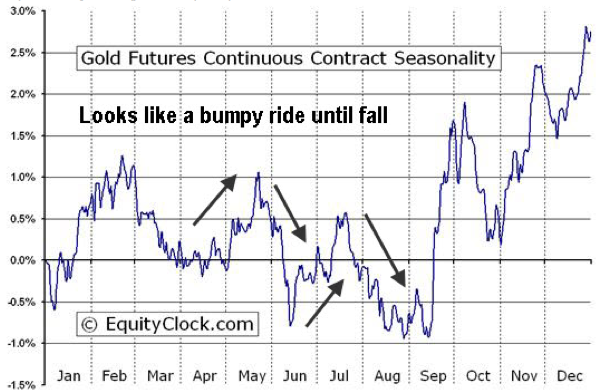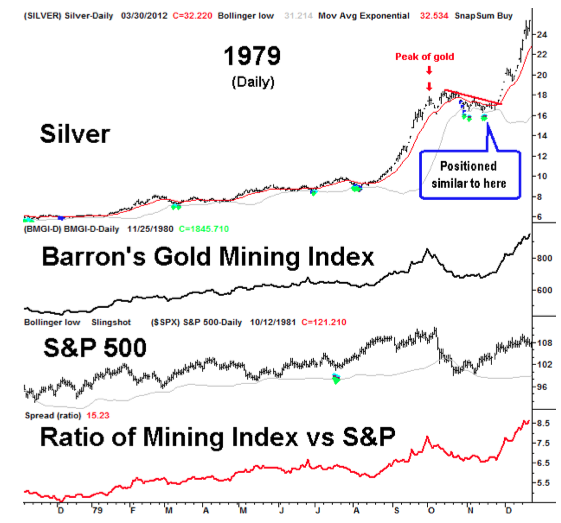Gold & Precious Metals


The chart above shows the detached housing prices for Vancouver, Calgary, Edmonton, Toronto, Ottawa* and Montréal (*Ottawa are combined residential). In March 2012 urban flippers continued reeling in accommodating buyers who jumped at asking prices on detached dwellings pushing them to new highs in Vancouver and Ottawa. Toronto remained aloft just shy of the February record with energetic double digit M/M sales. Month over month sales were strong in every city covered and only year over year sales showed up double digit red in the west (Scorecard). Short term excitement is the headline. Calgary and Edmonton held their gains from last month but their peak prices happened years ago in the Spring and Summer of 2007 (Plunge-O-Meter).
The party is being refreshed with mortgage rate inducement and the 10yr less the 2yr spread continues to narrow (34th month since May 2009). The last time this happened, the 10yr less the 2yr spread narrowed from Spring 2004 to Summer 2007 (similar duration) which set up the 2007-2009 crash. It’s an interesting comparison, buckle up.
Back to the Charts Page

You’ve heard of “risk on”; you’ve heard of “risk off”… But have you heard of “everything off”?
That’s the trade that seems to be underway right now. Investors are dumping everything with a ticker symbol: US stocks, foreign stocks, government bonds, corporate bonds, precious metals, crude oil and almost every other commodity.
In Wednesday’s trading worldwide, not one single major stock market index moved to the upside. In fact, here in the Americas — North, South and Central — no stock market index of any kind moved to the upside. Over in Europe, the ticker tapes were equally dismal, unless you happened to be tracking the bullish action in Slovenia, Montenegro, Cyprus or Latvia.
In the commodity markets, the CRB Index of commodities stumbled 1.5% this morning, as 14 of the 19 commodities in the index slipped into the red. Only nickel and coffee managed to gain more than one percent.
The newswires blamed the worldwide downticks both on the Federal Reserve and a poor government bond auction in Spain. The Fed was to blame, said Bloomberg News, “as the Fed minutes [from the March 13 FOMC meeting] showed less urgency to add stimulus.”
Meanwhile, the Spanish government struggled to sell bonds in its first auction since the country said its public debt would surge to record this year. The Spaniards, who had been hoping to sell €3.5 billion worth of government bonds, managed to knock down the gavel on only €2.6 billion worth of bonds.
The poor auction results kicked off a steep selloff in the Spanish bond market — pushing the yield on the 10-year government bond to its highest level since January, which was immediately before the ECB “solved” the eurozone crisis.
In other words, Dear Reader, the capricious gales of bureaucratic meddling and governmental manipulations continue to buffet the financial markets. Setting a reliable course in these conditions is no easy task.
Over the long run, of course, underlying fundamentals like earnings growth and dividend yields will dictate the course of one’s investments. But over the short run, the treacherous seas of interventionist governments and too-big-to-fail crony capitalism can capsize even the most seaworthy of investment strategies.
Sure, exceptional companies will still be exceptional. But when governments are actively price-fixing the cost of credit, while selectively rescuing fatally flawed governments and enterprises, rot flourishes. And when rot flourishes, healthy organisms struggle to take root and grow.
Furthermore, no one wants to build any kind of structure on a rotting foundation. So if investors, en masse, believe that the foundations underlying their investments are corrupt and rotten, they will seek to build their wealth elsewhere — either in other jurisdictions or simply in other asset classes.
They will seek to build their wealth as far away from rotten interventionist policies as possible. That could mean anything from seeking out the safest currencies to tracking down the most compelling foreign stocks or bonds to accumulating the kinds of assets that governments cannot easily corrupt — like real estate, precious metals and other hard assets.
This little introduction brings us to the latest (and most exciting) installment of what we call the Daily Reckoning Group Research Project. We will ask you, Dear Readers, to devise a “permanent portfolio.” Here’s the context:
A few decades ago, a guy named Harry Browne devised an investment strategy he dubbed the “Permanent Portfolio.” The idea was so simple it seemed almost moronic. And yet, with the passage of time we have discovered that his idea was pure genius.
He suggested building an investment portfolio out of only four components: gold, bonds, stocks and cash.

The idea was that at any given time, two or three of these four components might underperform — but the other portfolio components would perform so strongly, you’d get an overall gain that would outpace any increase in the cost of living.
Incredibly, this simple strategy has delivered some surprisingly strong investment results. In our column “The Permanent Portfolio Revisited”, written with Addison Wiggin, we provide a bit more detail about Browne’s Permanent portfolio, followed by a few questions:
1) Is Harry Browne’s original allocation still ideal for today’s macro-economic environment?
2) If not, how would you revise his original allocation for the next 30 years?
Please read on here, then submit your own version of the Permanent Portfolio.
Eric Fry
for The Daily Reckoning
Read more: Successful Investing Strategies in a Government-Centric Market http://dailyreckoning.com/successful-investing-strategies-in-a-government-centric-market/#ixzz1rCthT9X8


“Europe’s bailout, for one, is a hoax that can only end badly for us all. And the torrent of lies that have kept the U.S. out of statistical recession are so egregious that a bust of 1929 proportions could occur literally overnight and at any time.”
Think You Can Outrun a Global Flash Crash?
It was while under the influence of LSD that a childhood friend of ours decided to end a promising career as a commodity trader. He was buying and selling pork belly contracts at the time but dropped acid one day hoping to gain valuable insights into the markets — insights that presumably lay beyond the grasp of rational thinking. Chuck had insights all right, but not the kind he’d expected. Instead of having potentially profitable spreads, combos, strips and straddles leap out at him from his trading monitor, his febrile mind was overwhelmed by images of the slaughterhouse — of 400-pound sows dripping blood from a conveyor belt. The experience was cathartic enough that his next job, announcing professional basketball games, was as far from the feedlots and butcheries as he could get.
We mention this because market-watching has become all-too-abstracted for us lately as well. Ponder the whys and wherefores of the stock market for too long and you begin to believe that investors are being led, one rally at a time, to the slaughterhouse. Or so it would seem. Europe’s bailout, for one, is a hoax that can only end badly for us all. And the torrent of lies that have kept the U.S. out of statistical recession are so egregious that a bust of 1929 proportions could occur literally overnight and at any time. As we know, the mindless herd can have epiphanies just like individuals. Except that they are called panics. And yet, stocks continue to ratchet higher most of the time, pausing only long enough to allow sector rotation and the orderly flow of money in and out of the flavor-of-the-week asset class.
We’ve Had Our Warning
Someone in the Rick’s Picks forum described this yesterday as musical chairs, and we would agree. The remark was in response to a post by a regular poster who evidently believes he’ll know when it’s time to exit the stock market. Although he had asserted that there have always been warning signs in the past, we don’t recall any such signs prior to the May 2010 Flash Crash. Some traders we know have bragged that they saw the October 1987 crash taking shape that summer, like dark cumulus clouds on the horizon. But did they really? We doubt it. In point of fact, crashes occur because few have noticed or heeded whatever warnings signs were there to be observed.
To those who may be looking for the next warning sign, we would say: The May 6 2010 crash was your warning. That infamous event saw the Dow Industrials plunge 1000 points, or nine percent, only to recover the entire loss minutes later. Much as we’d like to believe that someone flipped the wrong switch, a crash of that kind could have occurred only because the electronic trading network itself had gone HAL-9000 wacky. And so it is with, not just the stock market, but the entire global financial system. It has been hard-wired to panic at ten-thousand times the speed of humans. And it therefore will, eventually.
Any trader or investor who is counting on beating HAL to the exit, or on a do-over once The Powers That Be have sorted things out, richly deserves to reap the whirlwind.
***
Information and commentary contained herein comes from sources believed to be reliable, but this cannot be guaranteed. Past performance should not be construed as an indication of future results, so let the buyer beware. There is a substantial risk of loss in futures and option trading, and even experts can, and sometimes do, lose their proverbial shirts. Rick’s Picks does not provide investment advice to individuals, nor act as an investment advisor, nor individually advocate the purchase or sale of any security or investment. From time to time, its editor may hold positions in issues referred to in this service, and he may alter or augment them at any time. Investments recommended herein should be made only after consulting with your investment advisor, and only after reviewing the prospectus or financial statements of the company. Rick’s Picks reserves the right to use e-mail endorsements and/or profit claims from its subscribers for marketing purposes. All names will be kept anonymous and only subscribers’ initials will be used unless express written permission has been granted to the contrary. All Contents © 2011, Rick Ackerman. All Rights Reserved.www.rickackerman.com














